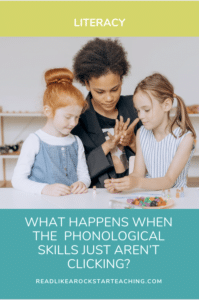

Culture in the classroom is inarguably the most important aspect that will inform your teaching. When we hear “classroom culture”, many educators think of systems, rewards and punishments, and even management systems. However, when we say culture in the classroom, we mean really getting to know the kids who sit in front of us.
Who are they?
What do they love?
What motivates them?
What do they care about?
What are their family customs?
Once we know that, the rest becomes much easier. When we seek to understand our students and respect their cultures, strong connections can be made. And we know, the best learning happens when our students feel loved, cared for, and seen!

It may come as no surprise, but we LOVE culture in the classroom! It is the heartbeat of the class. We used to do the typical getting to know you activities in the first few weeks of school, make the all about me posters, play the ice breaker games…until we realized knowing our kids culturally was a whole other ballgame.
We realized when we got to know our kids culturally we got to know them on a deeper level. We know what to expect from them, how to approach them, and how to make them felt respected. Doing so also helped me not be offended or feel “disrespected” by certain behaviors. We learned what they found pride and joy in, and in turn helped them identify and feel that pride consciously themselves.
Later, when one child disrespected another child’s culture, we all had the common understanding and language to build empathy, compassion, respect and actual kindness. We could say things like “If this is important for you, then you can understand how something is important for them.”
In the end, the classroom community just gets stronger.
Culture in the classroom looked like understanding why 4th grader Teva did not like to sit next to Adam when I pulled her gifted group for instruction. Was she being a typical 4th grader afraid of catching “cooties” and making my job harder? Was she *gasp* challenging my authority?
No.
Teva was from Iraq. She attended an all-girls’ school. She had never sat next to boys; learning beside them. She was uncomfortable sitting close to another boy. As I probed and understood, it was simple enough to move her away from Adam, making her comfortable and engaged in learning. This is also something that likely would not have been uncovered in a simple All About Me poster. What could have turned into a power struggle, or seen as rude, turned into a simple seating switch, problem solved!
While this is one example, we have encountered other scenarios:
-Making eye contact is considered rude in some cultures, but many American systems require eye contact. Also, for some disabilities or neurodivergent children, making eye contact may not be a part of their culture or way of doing things.
-Making eye contact may be difficult for some with disabilities, but many teachers see that as a sign of engagement.
-Speaking up and being assertive may be seen as egotistical or showing off in collective cultures. Again, American or individualistic systems encourage this. Students who have been taught otherwise may be seen as shy, quiet, lazy, unengaged, or even not smart.
-Sticking up for oneself- some students may be taught never to reply to an adult’s questions, as that is considered answering back. Teachers may not ever get the full story of a situation, learning or otherwise.
Once, a white teacher approached us asking, “I’d love to do culture studies in my class, but all my students are white. How would this work or benefit us?”
A racially homogenous classroom will still have different home cultures.
Does every family eat exactly the same?
Do they all cook in the same way?
Use the same seasoning?
Prepare Christmas dinner the same?
Even do a Christmas dinner?
Have the same traditions?
Have the same standards or rules?
Worship the same?
Listen to the same music?
In the end, the teacher did culture studies in her classroom, and soon discovered one student went to baseball on Sunday mornings while another exclaimed, “What? You don’t go to church?”
Yes, they were all white. But not all white people have the same home cultures. This exercise still made space for all the kids to feel valued and share their joy.
At the same time, everyone was decentered, they built respect for the different ways different people do things, and opened their minds to the fact that not all people go to church on Sundays…and that is OK!
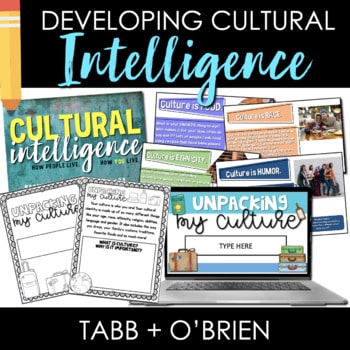
We talk so much about culture in the classroom because the classroom is a microcosm of the larger world. Kids will encounter different people, personalities, and situations. It is the perfect place to start teaching kids how to love and embrace each other’s differences. Imagine a world where all children PreK-12 had a chance to engage in and learn each other’s cultures. Then, they would go off to work, mixing with more people, having better general knowledge and knowing how to approach new experiences and differences respectfully.
“Oh, you eat Kimchi? Cool.”
“Oh, its Eid? Are you fasting? Can we support you in any way?”
“Let’s not plan an important meeting that day, it’s a Jewish holiday.”
Skyler has baseball Sunday mornings, let’s call later.
*Not commenting on a person’s facial tattoos, knowing it is an Indigenous tradition. *
So many of our problems happen because of othering folks, not understanding them, and at worst, judging their way of existing. Approaching culture in the classroom is a world changing opportunity. Don’t miss it!
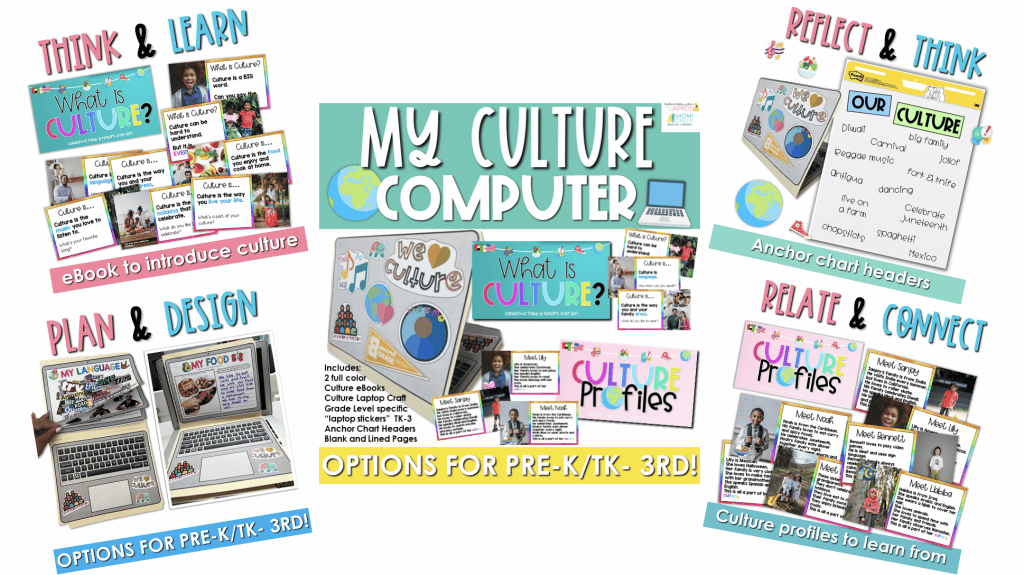
I am super excited to be teaching pre-k this year, and you know LaNesha and I have the pre-k culture resource ready to go! Students will get to make their own laptops full of everyone’s cultures. Check it out here.
If you are ready to learn about your students and need some help, we have created these other resources to help.
Primary and intermediate teachers, we got you! If you’re ready to build relationships and learn about your students, this is the resource for you! The eBook can be projected onto the screen, so students can learn what culture is. Students can then take the flip book home to fill out with their families. When they come back they can share in class, sharing their stories with each other. This also walks you through how to set up a culture night at your school!
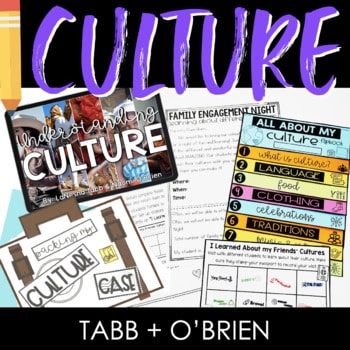
Once your class is comfortable with culture discussions, you can revisit the topic later in the year with this cultural intelligence resource. Students get to explore the specific definitions of culture and cultural intelligence. They will understand the importance of cultural intelligence- that it helps us to make friends with and work well with people from different cultures. When we seek to understand people and respect their cultures, strong connections can be made.

You can even make your own classroom culture lessons based on who is in front of you!
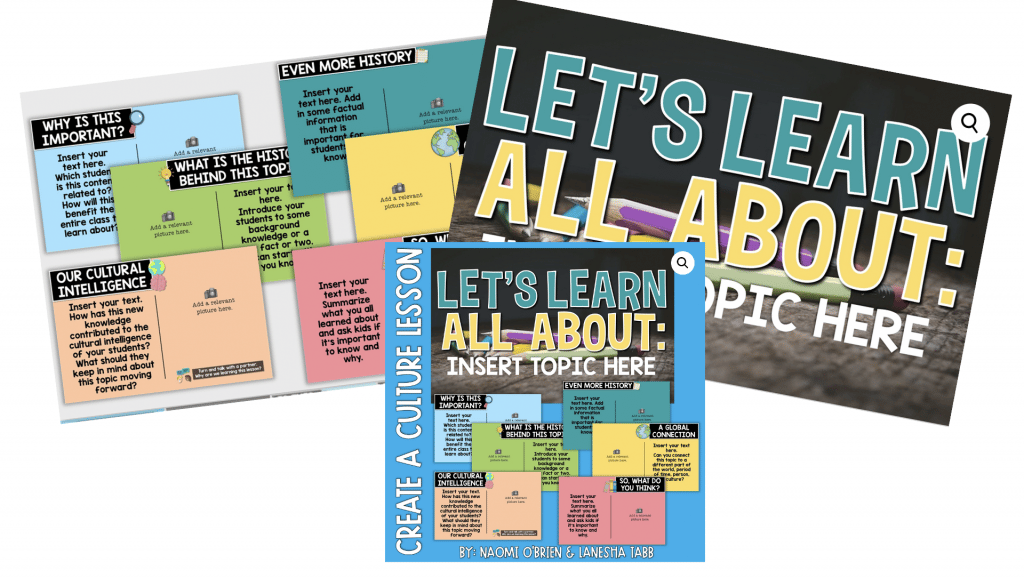


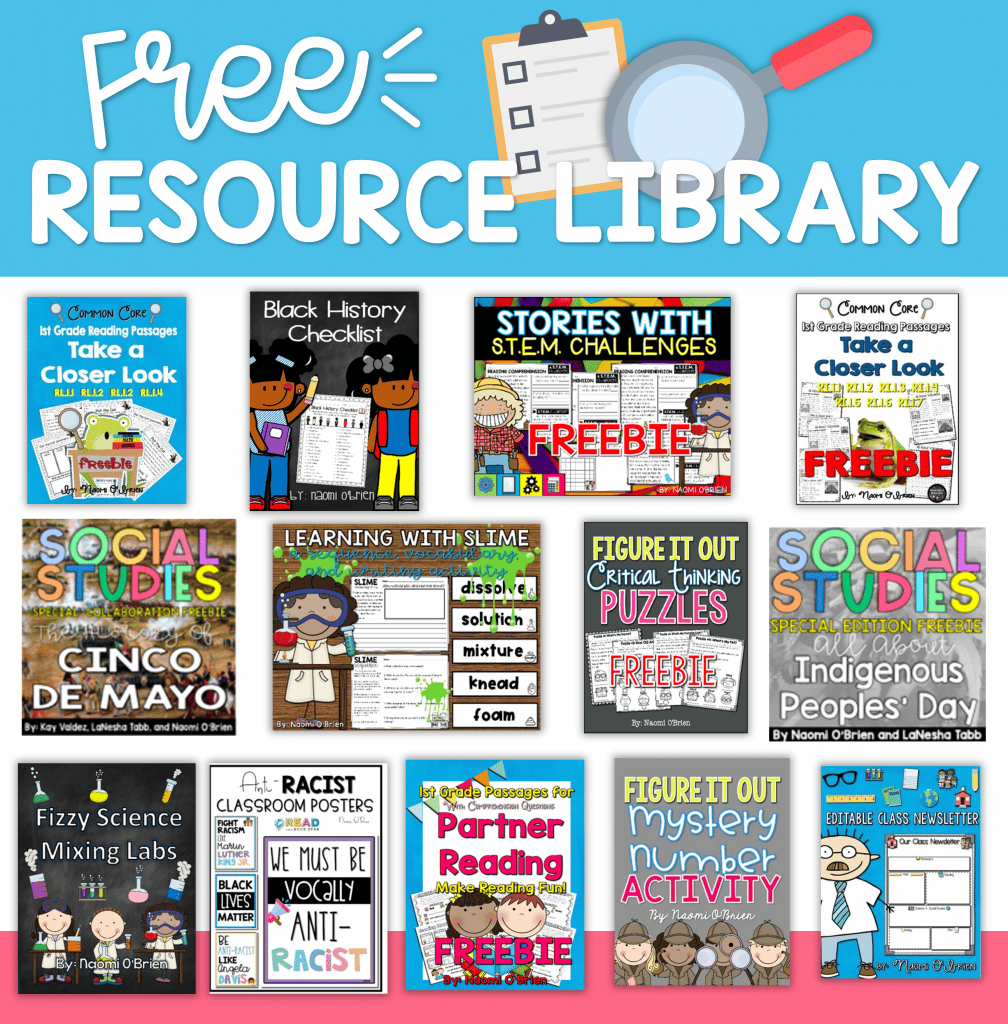
| Cookie | Duration | Description |
|---|---|---|
| cookielawinfo-checkbox-analytics | 11 months | This cookie is set by GDPR Cookie Consent plugin. The cookie is used to store the user consent for the cookies in the category "Analytics". |
| cookielawinfo-checkbox-functional | 11 months | The cookie is set by GDPR cookie consent to record the user consent for the cookies in the category "Functional". |
| cookielawinfo-checkbox-necessary | 11 months | This cookie is set by GDPR Cookie Consent plugin. The cookies is used to store the user consent for the cookies in the category "Necessary". |
| cookielawinfo-checkbox-others | 11 months | This cookie is set by GDPR Cookie Consent plugin. The cookie is used to store the user consent for the cookies in the category "Other. |
| cookielawinfo-checkbox-performance | 11 months | This cookie is set by GDPR Cookie Consent plugin. The cookie is used to store the user consent for the cookies in the category "Performance". |
| viewed_cookie_policy | 11 months | The cookie is set by the GDPR Cookie Consent plugin and is used to store whether or not user has consented to the use of cookies. It does not store any personal data. |
Thank you for your interest in booking a private professional development experience! Please fill out our Booking Inquiry form and a member of our team will contact you soon.